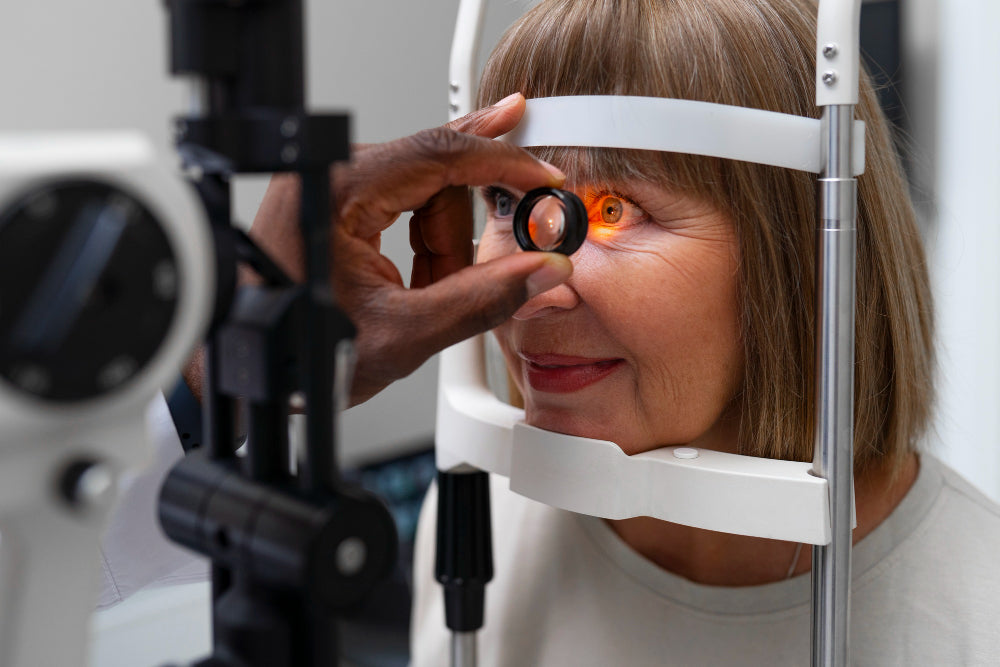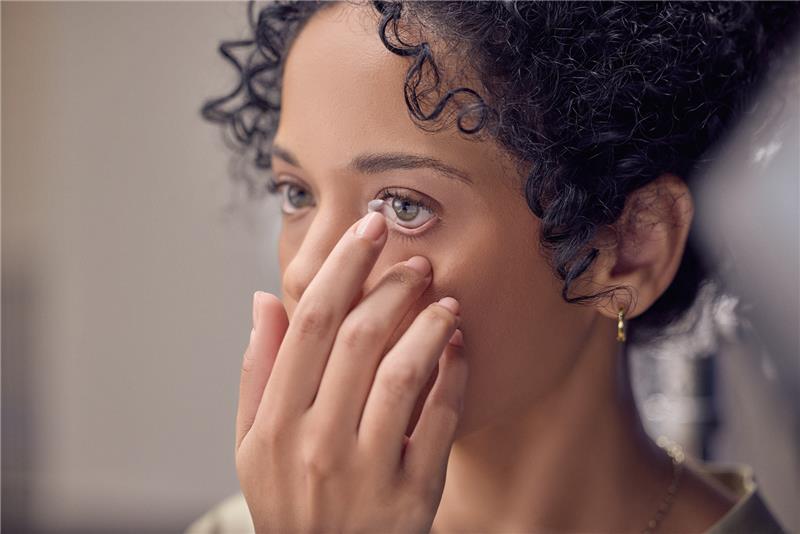Ever wonder why you need glasses but others don't? Or maybe you're curious if your child might inherit your vision problems. Eye health often feels like a mix of mystery and genetics. So, is bad eyesight genetic? The answer is yes. Conditions like nearsightedness, farsightedness, and astigmatism often run in families, though lifestyle factors play a role, too.
Understanding the factors behind your vision can help you take charge of your eye health, especially if certain conditions could affect your family for generations. Let's dive into how genetics, environment, and daily habits influence how well we see.
Is Bad Vision Genetic?
To answer the big question right off the bat, yes, genetics can play a role in determining your eyesight. If your parents or grandparents wear glasses, you might have noticed similar vision issues over time.
Certain eye conditions, like nearsightedness (myopia), farsightedness (hyperopia), and astigmatism, often run in families. If you’ve been curious about whether bad eyesight runs in families, there’s a good chance your vision is linked to your family history.
However, the genetic link isn't always a guarantee. While genetics play a significant role, your environment, lifestyle choices, and overall eye care habits also contribute to your vision's development. Vision health can be complex, so Vision Source Rio is dedicated to helping patients uncover the root causes of their vision issues.
The Most Common Genetic Vision Problems

Some eye conditions are hereditary and can even cause blindness. If certain eye problems are common in your family, it's worth discussing them with your optometrist:
1. Glaucoma
Glaucoma can be hereditary. It occurs when intraocular fluid cannot drain properly from the eye, elevating pressure and damaging the optic nerve. This damage leads to vision loss or even irreversible blindness. However, early treatment can preserve vision and prevent further loss. If you have a family history of glaucoma, consult your optometrist about early testing and treatment options.
2. Refractive Error
Refractive error is caused by changes in the shape of the eye, usually in the lens, and cornea. They affect the way light travels through the eye, and these errors distort vision. Refractive errors including nearsightedness (myopia), farsightedness (hyperopia), and blurred vision (astigmatism), can be hereditary. If refractive error runs in your family, you or your children may experience them as well.
3. Cataracts
While aging is a common cause of cataract development, genetics also plays a significant role. Cataracts can even occur in children. With cataracts, the lens inside the eye becomes cloudy, creating blur in your field of vision. If grandparents or parents had cataracts, there's a higher chance of inheriting the condition. Your optometrist can perform regular exams to monitor for early signs.
4. Macular Degeneration
Macular degeneration is an age-related eye condition that primarily affects those over 50 and can lead to vision loss. It damages central vision by causing the macula at the back of the eye to thin and deteriorate. A family history of macular degeneration raises the risk, especially after age 40. Smoking and poor dietary choices also play a significant role in macular degeneration.
5. Diabetic Retinopathy
Diabetic retinopathy (DR) is a diabetes-related condition that damages blood vessels in the retina. Since diabetes can be hereditary, people with a genetic predisposition to diabetes are at risk for DR. Individuals without diabetes aren't at risk for DR. Diabetes is chronic carbohydrate toxicity syndrome. Cut your carbs. Keep your A1C under 5.6 to avoid diabetes and its complications.
6. Color Blindness
Most types of color blindness are inherited and affect men more often than women due to their link to the X chromosome. Although the condition doesn't worsen over time, most currently have no treatment beyond specialty lenses that can help those with color deficiencies to separate out certain colors. A little known fact is that people with color blindness see better in the dark. It is believed that color blindness was actually an evolutionary shift over time to help humans see and hunt in the dark.
7. Night Blindness
Night blindness occurs when the retina struggles to adapt to low light levels. The retina contains rod cells for dim light and peripheral vision and cone cells for bright light, color vision and central visition. Inherited night blindness is caused by mutations in rod cells and can sometimes lead to peripheral vision loss and a condition called retinitis pigmentosa.
8. Amblyopia (Lazy Eye)
Lazy eye, or amblyopia, can sometimes be caused by inherited refractive errors in children. The brain favors one eye over the other, resulting in unbalanced vision. If untreated, the brain may rely on the stronger eye, allowing the other to weaken. Children with untreated lazy eye do not develop the ability to use their eyes together for binocular vision, resulting in no discernable depth perception.
9. Strabismus (Crossed Eyes)
Strabismus affects eye muscles, causing the eyes to cross inward (esotropia) or outward (exotropia), forcing them to look in different directions. This condition can be hereditary, so early eye exams and treatment can help maintain vision strength in both eyes.
What Causes Bad Eyesight from Birth?
Some eye conditions can indeed manifest at birth or develop shortly after. Congenital issues like congenital cataracts or retinopathy of prematurity can cause poor vision early on. Additionally, some genetic syndromes, like Stickler syndrome and Marfan syndrome, can affect eye health and lead to refractive errors or dislocated lenses within the eyes.
Maternal health during pregnancy and environmental factors can also impact fetal eye development. While some children are born with poor eyesight due to genetic factors, others may develop vision problems as they grow due to a mix of genetic and environmental influences.
Can You Be Born with Bad Eyesight?
Yes, some babies are born with conditions that impair their vision, including inherited disorders or structural eye abnormalities. The answer may be unsettling for parents wondering about bad eyesight when their baby is born, but early detection and treatment can make a big difference.
If you're a new parent with a family history of eye issues, or even if there are no eye issues you are aware of in your family, monitor your baby's visual development. At Vision Source Rio, we offer a FREE eye exam for infants aged 6 to 12 months through our InfantSEE program. Every infant needs to be checked for amblyopia, strabismus, and retinoblastoma, a rare but devastating eye cancer that can not only rob your baby of their vision, but of their life! Catching retinoblastoma early is key to infant survival. We also offer pediatric eye care to identify and address other vision problems early on. Intervention through corrective lenses or vision therapy can enhance a child's eyesight and support their overall vision health, development and well being.
The Role of Family History

Understanding your family's vision history can provide valuable insight into your own eye health. If you have family members with conditions like glaucoma or macular degeneration, your risk of developing these issues is higher. This familial connection underscores the importance of regular eye exams for everyone in the family.
At Vision Source Rio, we emphasize comprehensive eye exams as part of our services. Regular check-ups aid in early detection and allow us to recommend preventive measures tailored to your family history.
Lifestyle Factors Impacting Eye Health
While genetics play a significant role in determining your eyesight, lifestyle choices are equally important. Factors like diet, screen time, and UV light exposure can significantly affect your vision.
- Diet: A diet rich in omega 3 fatty acids and low in omega 6 promotes eye health. Red fatty meat, fatty fish, and eggs are key. Avoid processed foods and seed oils.
- Screen Time: Prolonged screen time without breaks can lead to digital eye strain.
- Outdoor Activity: Spending time outdoors has been shown to reduce the risk of myopia in children.
By making positive lifestyle choices along with understanding your genetic code, you can take significant steps toward preserving your vision for a lifetime of confidence and well being.
Conclusion
In summary, while bad eyesight is often genetic, it is influenced by many factors, including environment and lifestyle choices. Understanding whether needing glasses is genetic involves looking at both your family history and personal habits. If you're concerned about your vision or that of your loved ones—especially if there's a history of eye issues—schedule regular eye exams.

At Vision Source Rio, we offer comprehensive services tailored to meet your family's needs. Whether it's routine check-ups or specialized care for hereditary conditions, our team is here to support your visual health journey.
Take action today! Schedule an appointment with us to learn how genetics may influence your eyesight and discover personalized strategies for maintaining optimal eye health. Your vision matters—let us help you see clearly today!
Uncover More Detail Insights:





